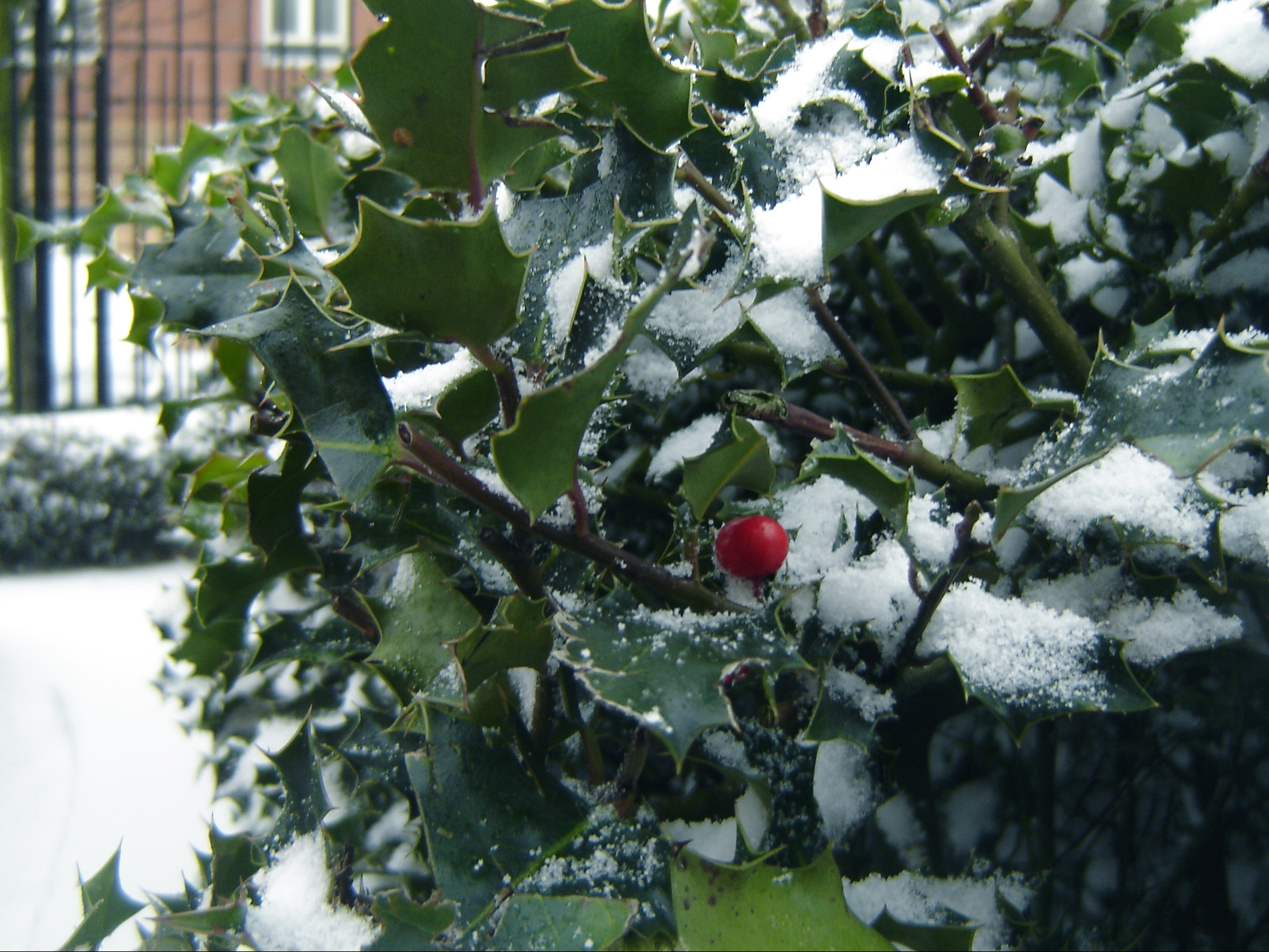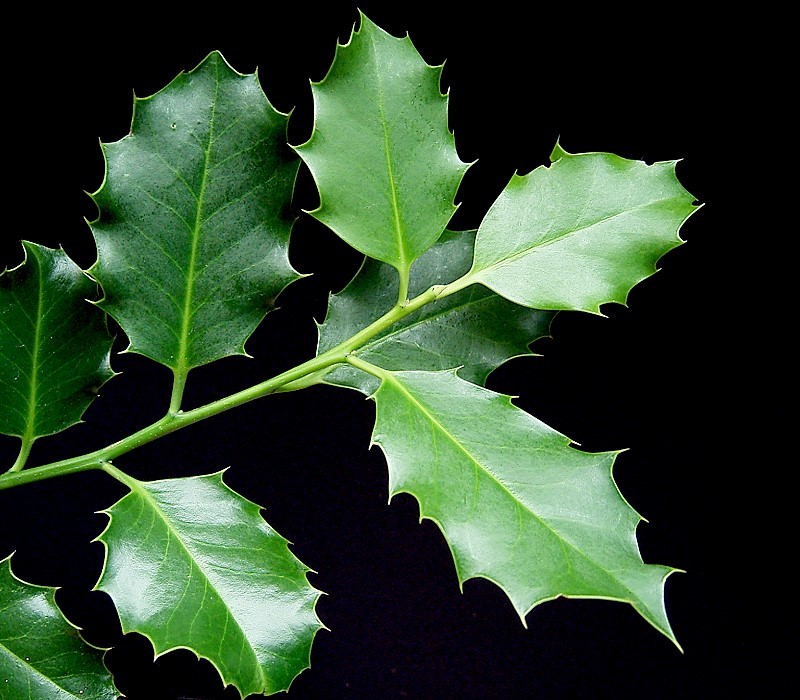One Tough Tree!
When it comes to plants, Holly is one of the toughest. It can
grow in a huge variety of environments and under numerous
conditions. It can grow in light, sandy soil, medium soil, and
even relishes in heavy, clay soil. It can survive in extremely
acidic environments and prefers soils that range in pH from 3.5
to 7.2. English Holly is also very shade tolerant and is often
found as a dominant understory plant. Some Holly plants have
been found to withstand complete shade, but these plants often
develop leaf spot diseases and have decreased berry production.
Other environmental conditions that seldom affect Holly trees
are atmospheric pollution, maritime exposure and drought. Most
English Holly plants, however, do require dry to moist soil and
have difficultly succeeding in water logged environments.

Figure 1: English Holly tree in Winter.
Ilex aquifolium has adapted well to the dry and cold environments that it
resides in. Most of these adaptations have taken place in the leaves of the
tree. English Holly leaves have developed an edge covered with several spines to
protect against predation by the
domestic cow and other cattle. These
spines are also adaptations to dry soil conditions, similar to the spines on a
cactus, for example the Christmas
cactus. Holly leaves have also
developed a thick cuticle to prevent water loss and protect against the cold.
Because the leaves are smooth and have a twisted shape they are not weighted by
snow in the winter. Through these many adaptations English Holly trees are able
to survive and produce fruit through the coldest winters and the longest
droughts.

Figure 2: The spines and tough cuticles of Holly leaves are
important adaptaitions.
There is a downfall, however, to the tough nature of English Holly. Its ability
to survive in a number a soil types and pH ranges, as well as its small
dependence on sunlight, make it an aggressive and
invasive species. In newly
developing regions Holly tends to out-compete any competition by casting a deep
shade on any smaller vegetation that has taken root. Its thick, dark-green
foliage creates a barrier against other plants and even though it reproduces
rather slowly it can quickly overcome any obstacles.
Up next, Reproduction...
|